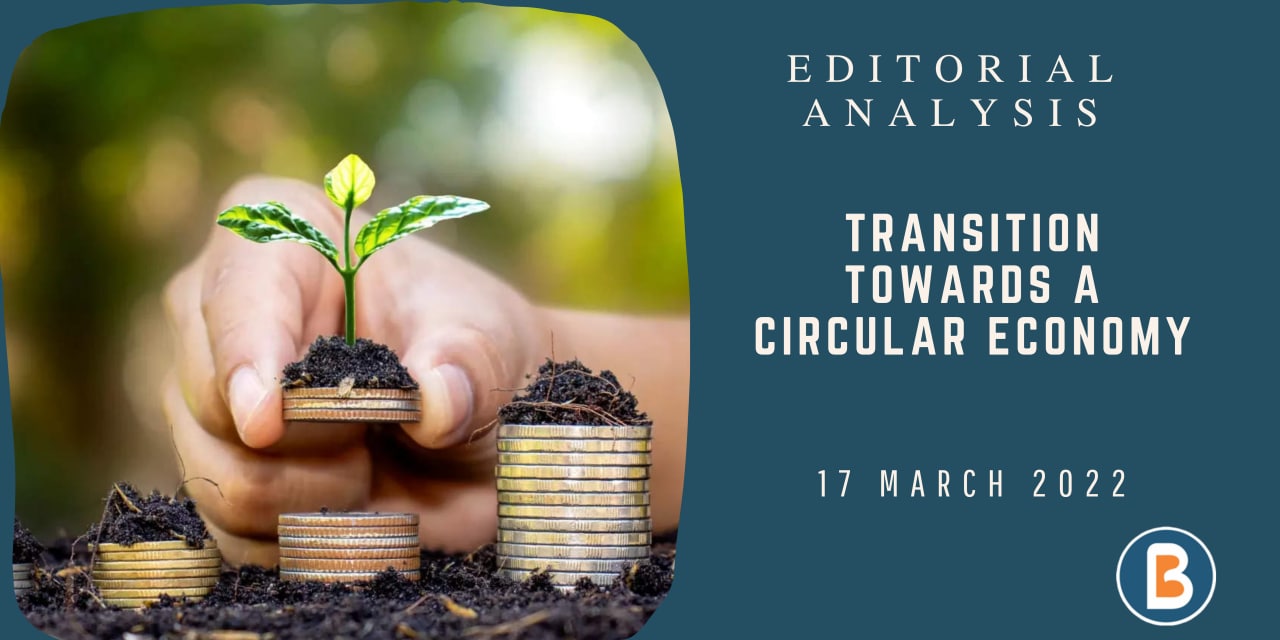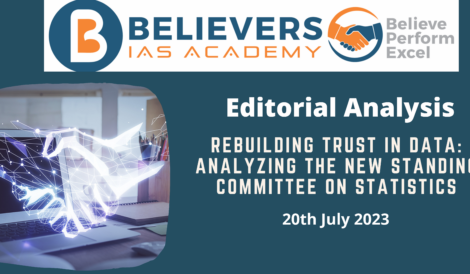Transition Towards a Circular Economy
Context:
• In the Budget speech this year, the Finance Minister, Nirmala Sitharaman, emphasized the role of cleaner technologies such as solar energy and batteries in India’s future economic growth.
• In addition, she mentioned the importance of transitioning to a circular economy from the existing linear one.
What is Circular Economy?
• A circular economy is a systemic approach to economic development designed to benefit businesses, society, and the environment.
• In contrast to the ‘take-make-waste’ linear model, a circular economy is regenerative by design and aims to gradually decouple growth from the consumption of finite resources.
• A circular economy is “a model of production and consumption, which involves sharing, leasing, reusing, repairing, refurbishing and recycling existing materials and products as long as possible”.
Why the focus now?
• As the world is transitioning towards a sustainable energy future, there are challenges associated with it.
• With huge renewable energy products such as solar plants, there is also challenge of managing the waste generated by it.
• According to the International Renewable Energy Agency (IRENA) — an intergovernmental organization that supports countries in their transition to a sustainable energy future — the cumulative waste generated by India’s total installed solar capacity could be as high as 325 kilotons by 2030.
• There is going to be a huge market for the battery recycling industry as well.
• So a robust renewables waste management and recycling ecosystem will help in mitigating the environmental harms.
• Apart from this it will help in creating new jobs and will also be economically beneficial.
Need for Regulation:
• The governments must revamp the existing policies related to waste management and include policies to bring clean energy components under their ambit.
• The rules should specify the responsibilities of the producer in managing the waste.
• And the renewable energy ecosystem has various stakeholders including the importers, distributors, manufactures, etc.
• So, the policies must clearly specify the responsibilities.
Environmental Challenges:
• With the absence of any regulation landfilling is the most common way of managing the renewable energy waste but it comes at a cost.
• The waste elements is dumped in the open and causing these elements to leach into the food chain.
• Experts are of the opinion that leaching of heavy metals such as lead and cadmium from solar photovoltaic modules could increase substantially.
Need for R&D:
• The renewable energy industry should invest in the research and development of recycling technologies.
• Recycling is a multistep process that includes dismantling, disassembly, and extraction.
• Dismantling is largely a manual process that is sometimes automated.
• Disassembly can be done mechanically, thermally or chemically. Besides these traditional methods, investments in research and development could help discover new ways of recycling that result in higher efficiency and a less environmentally damaging footprint.
Source: THE HINDU




